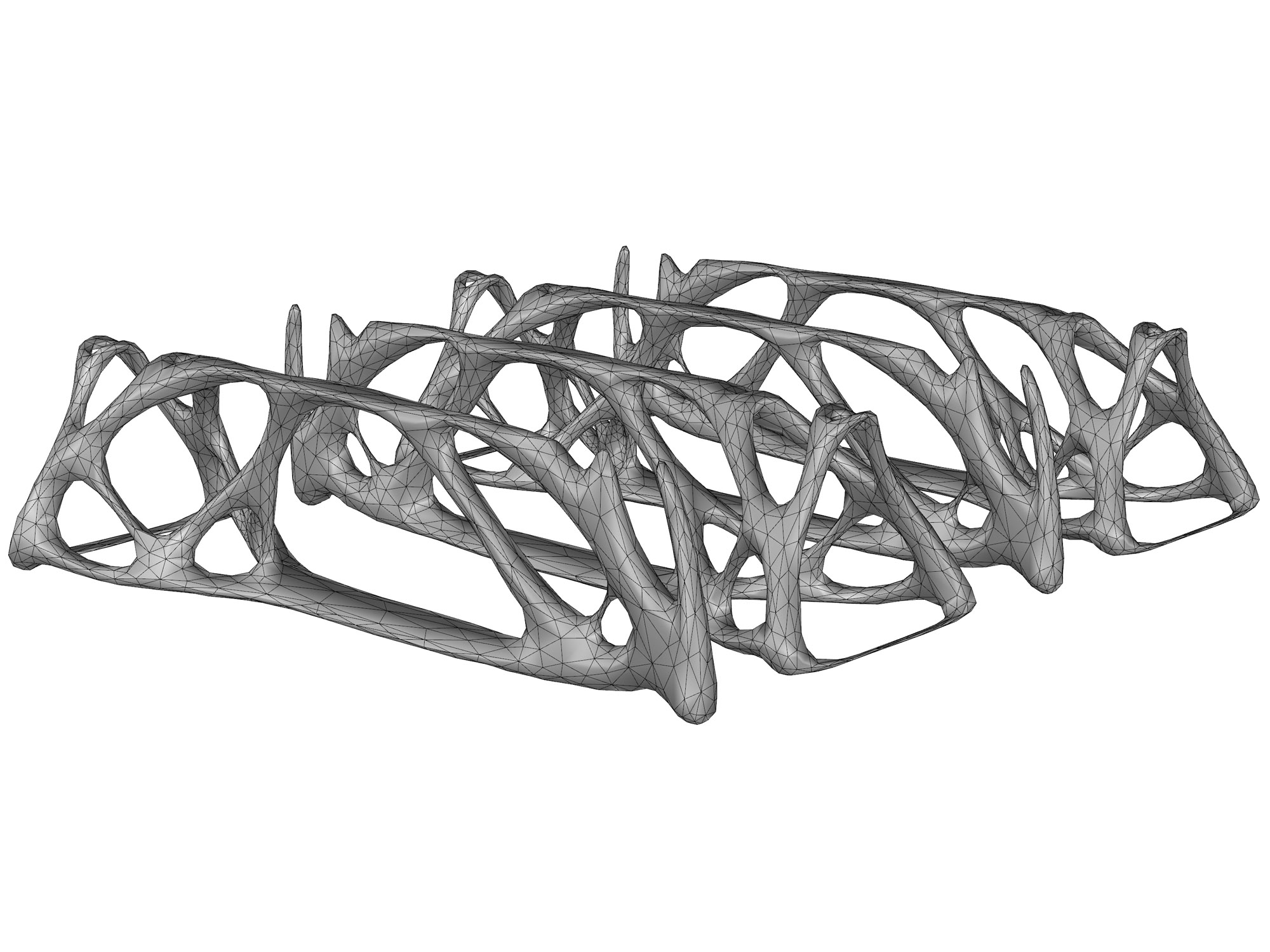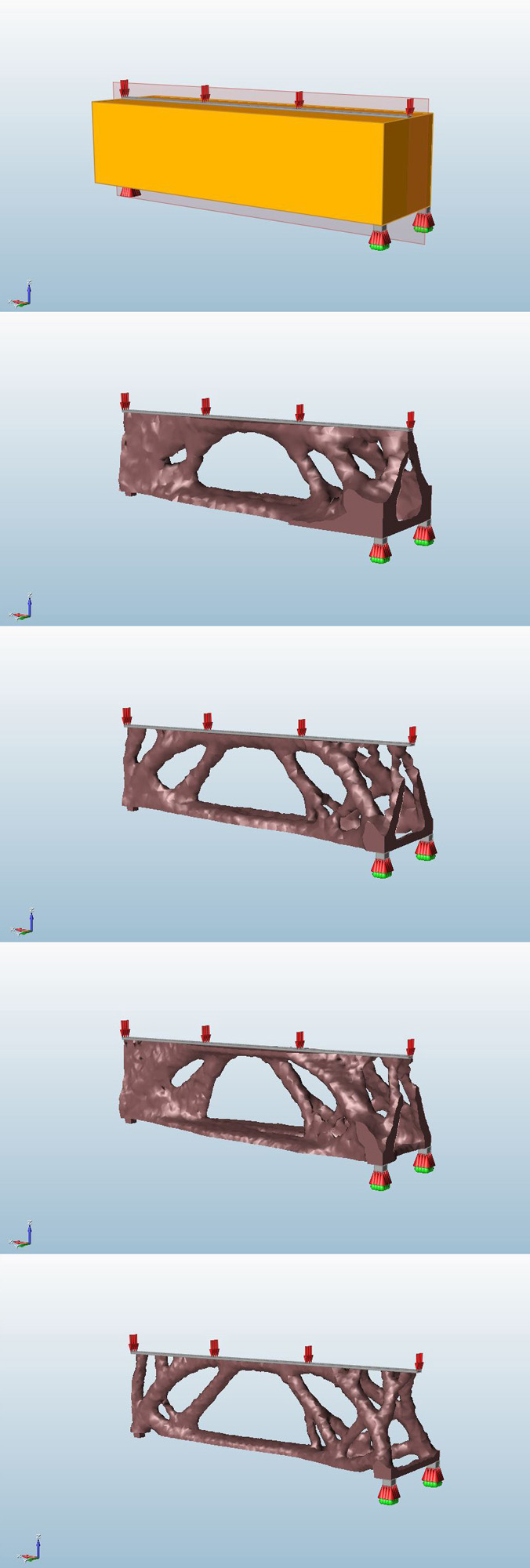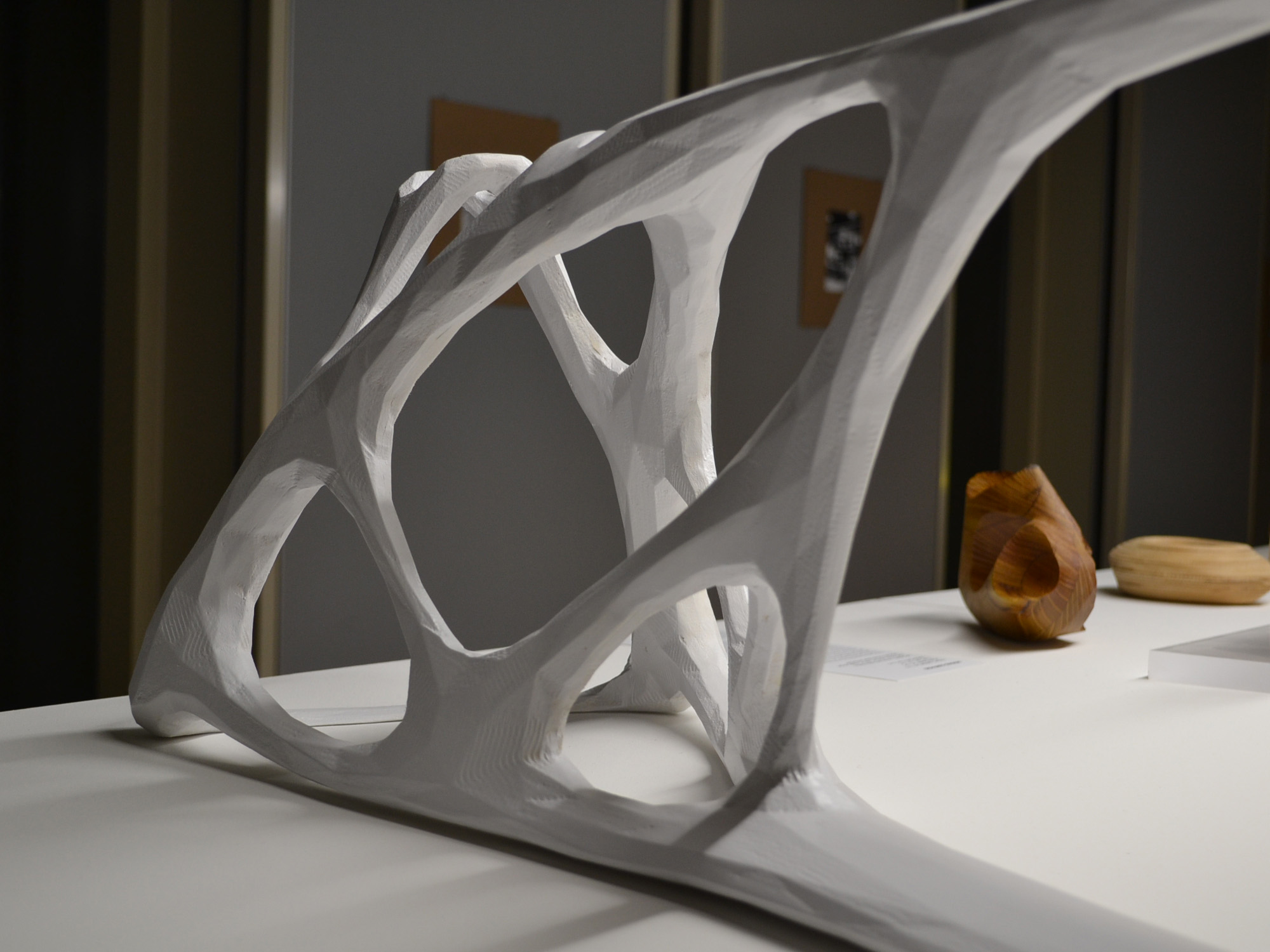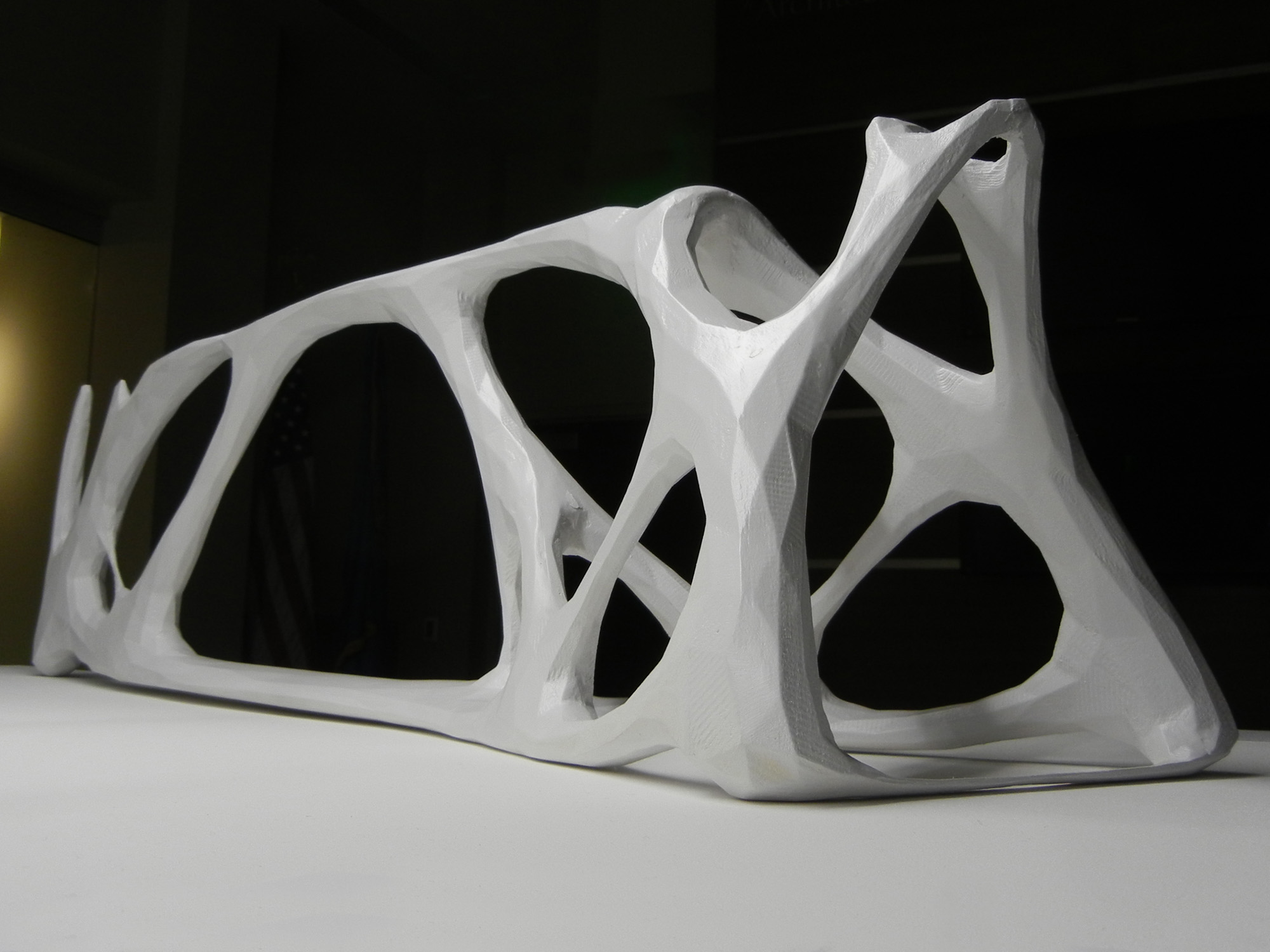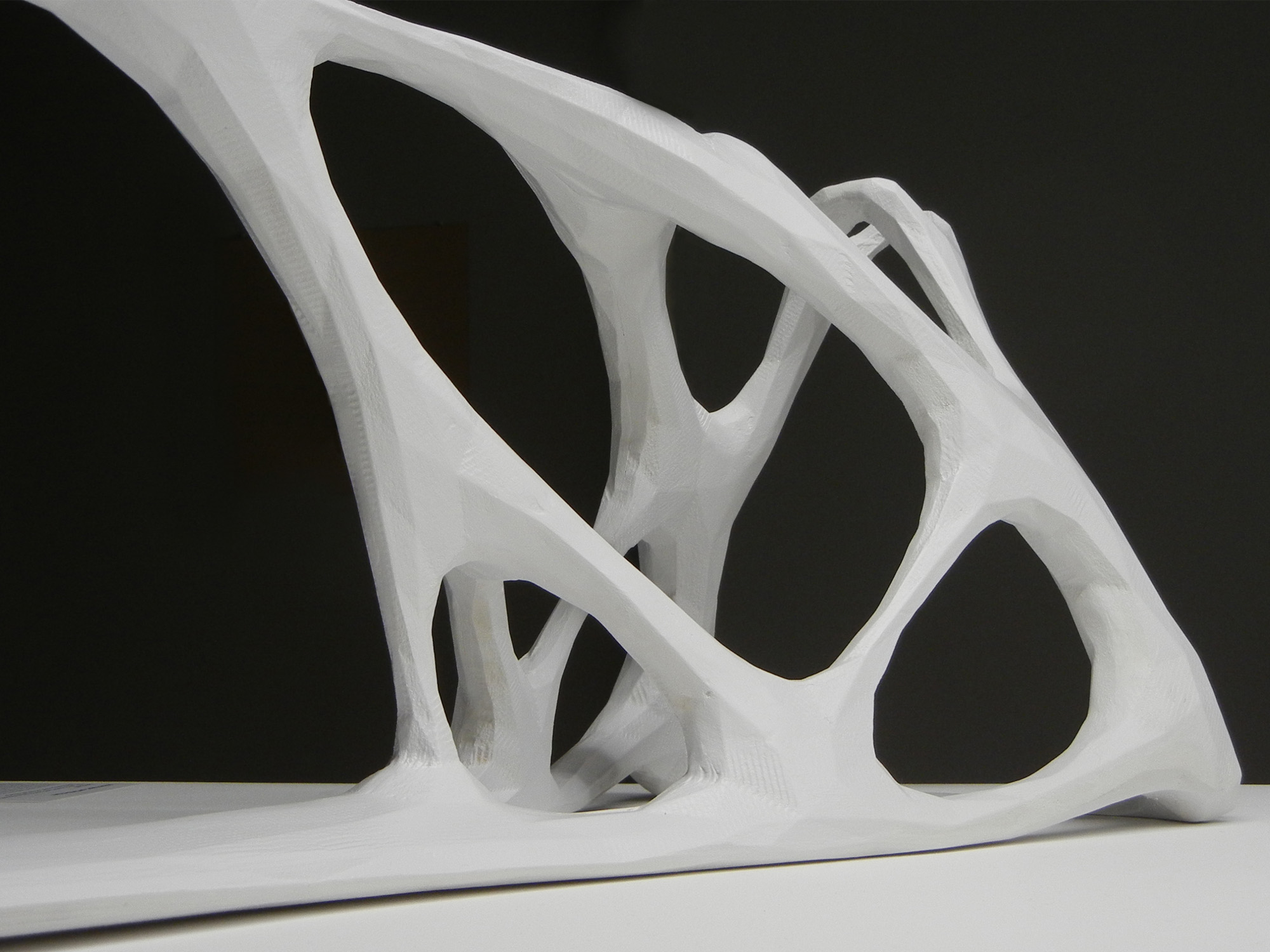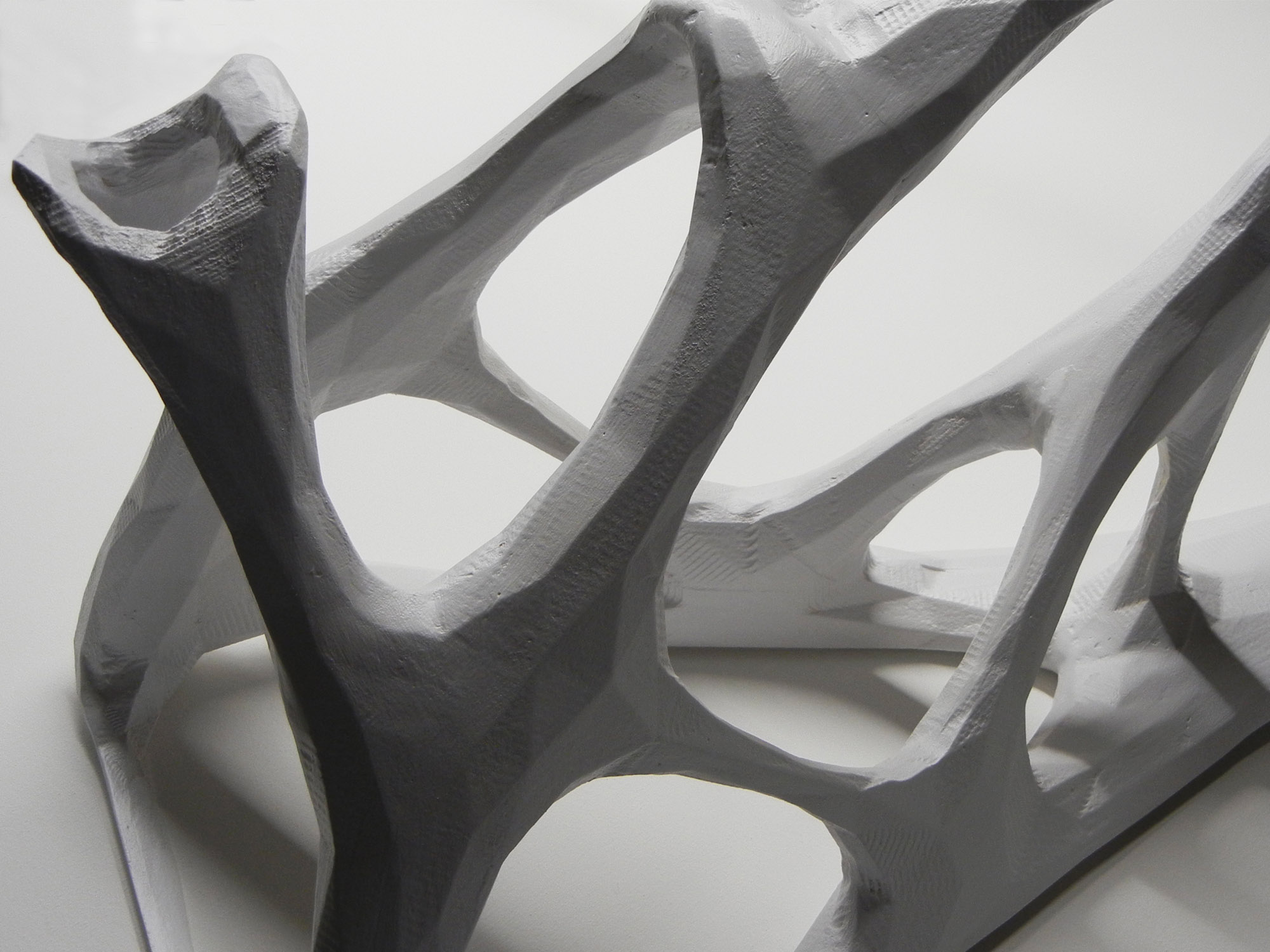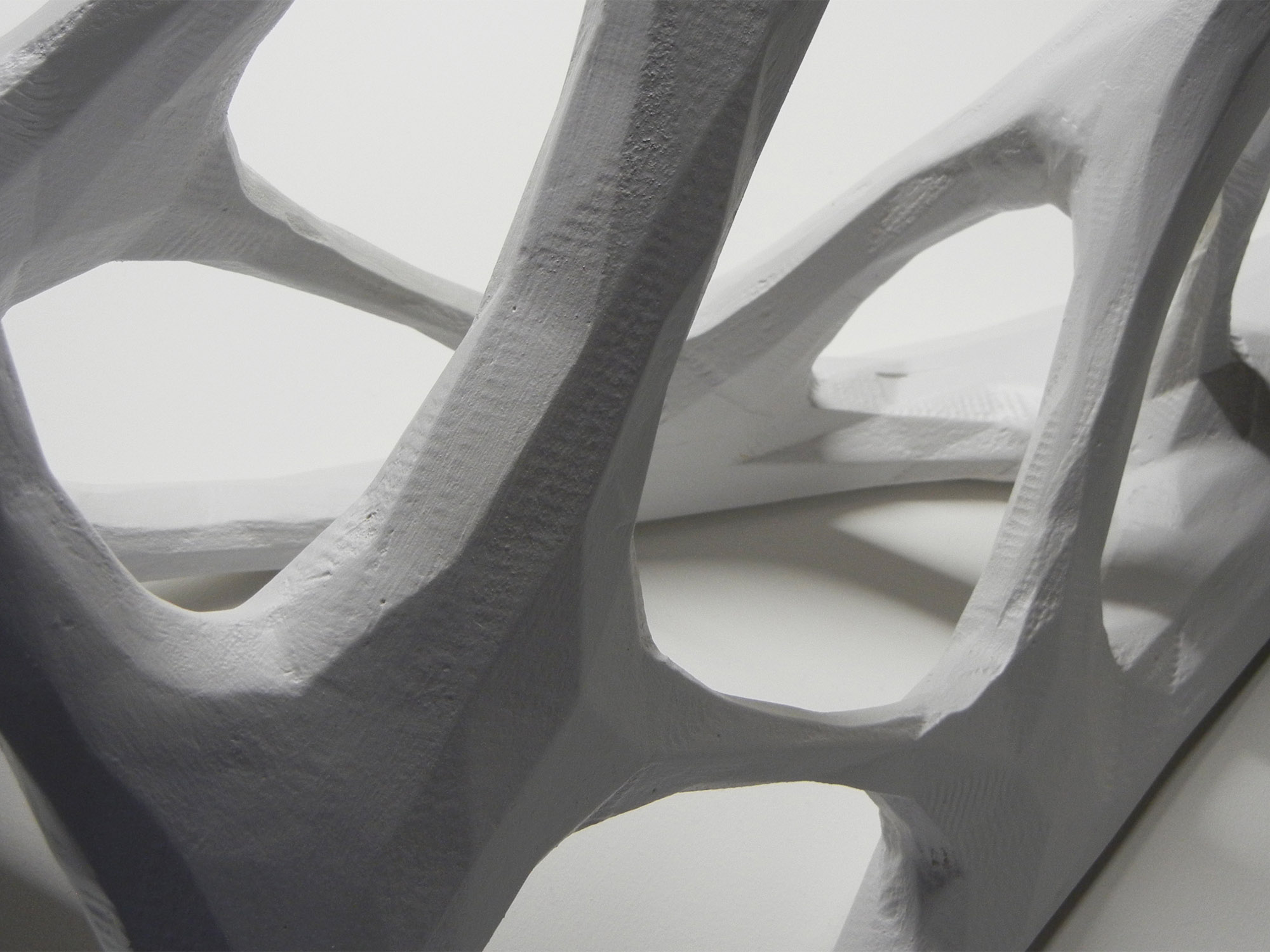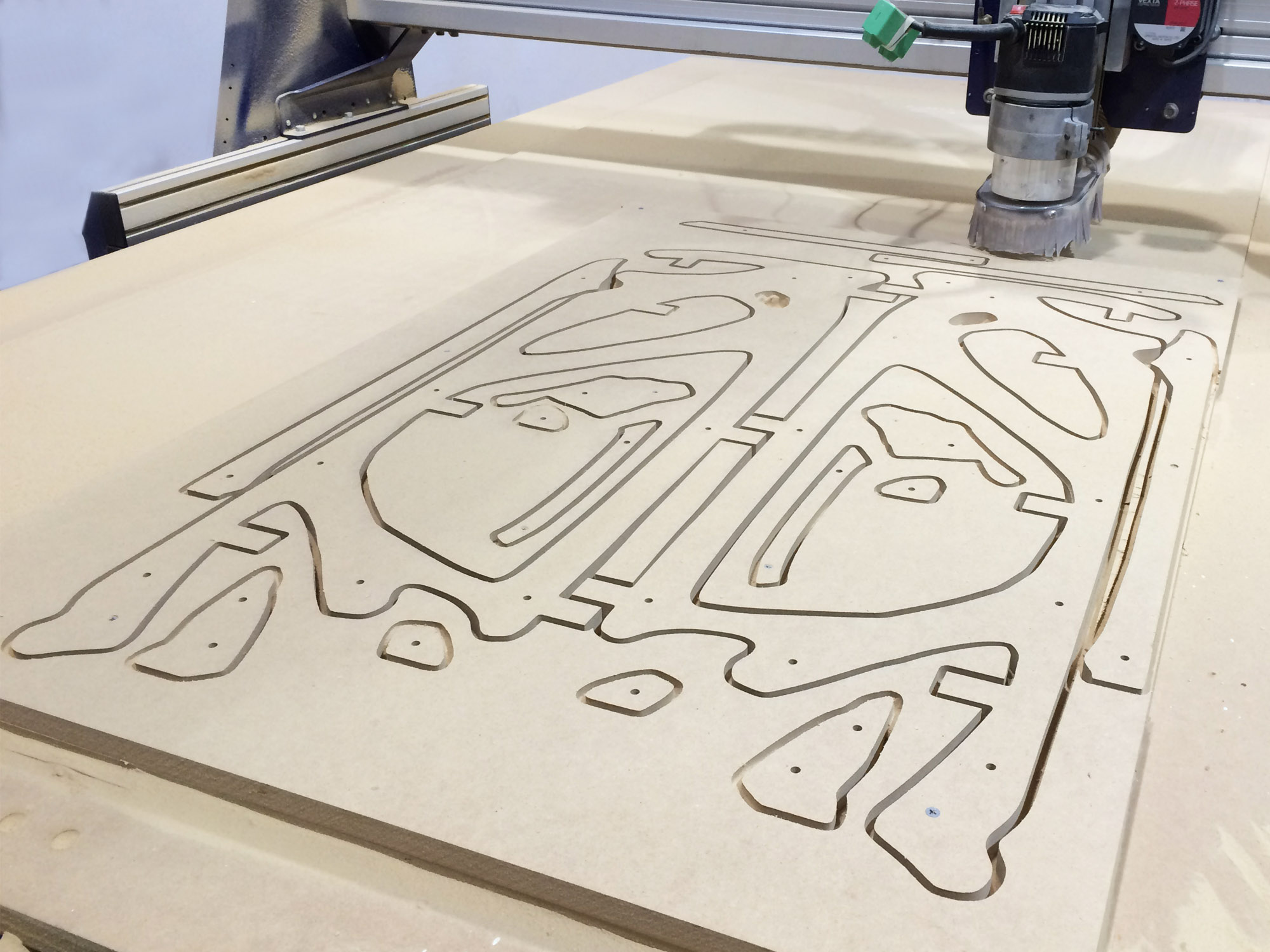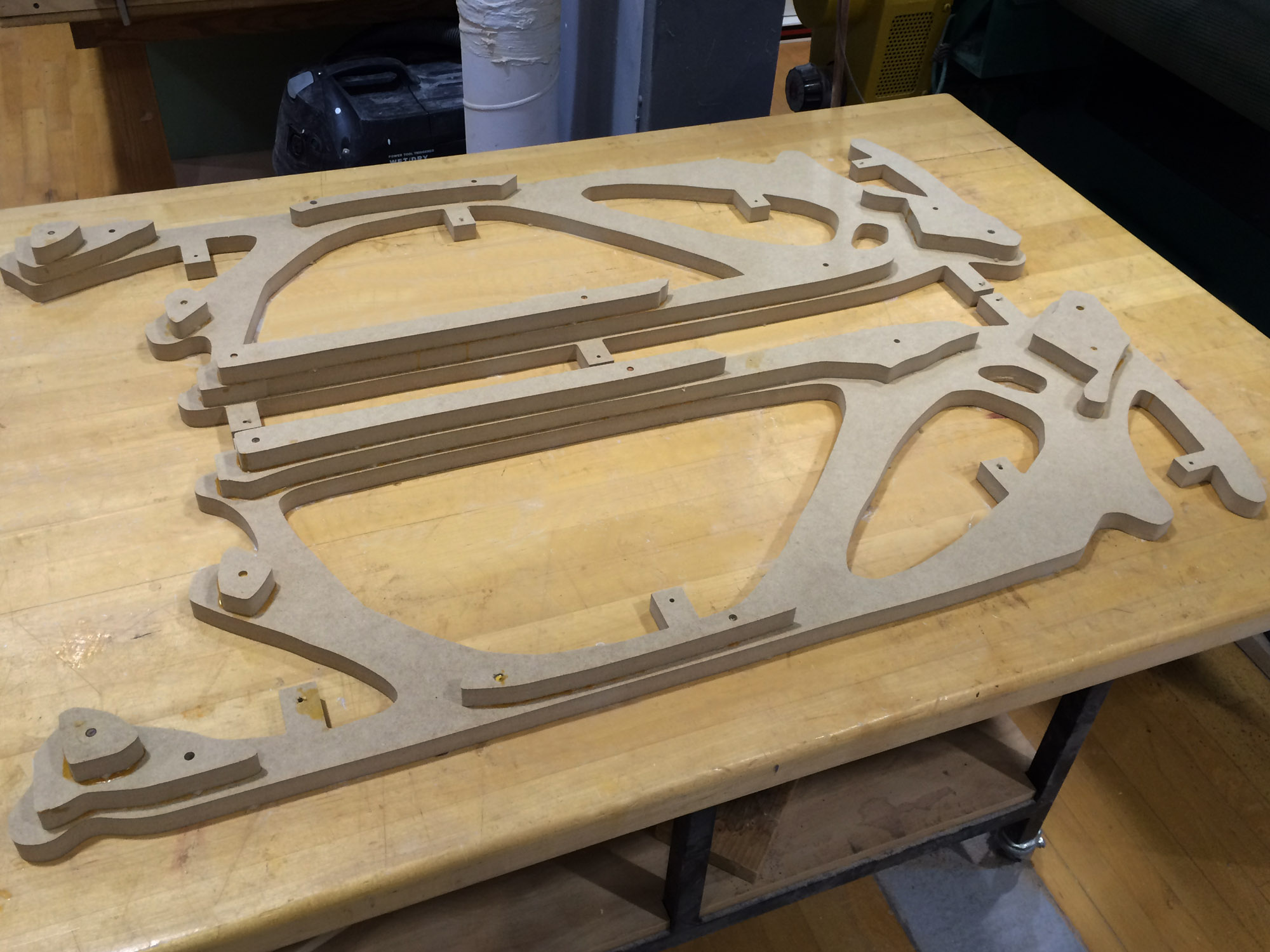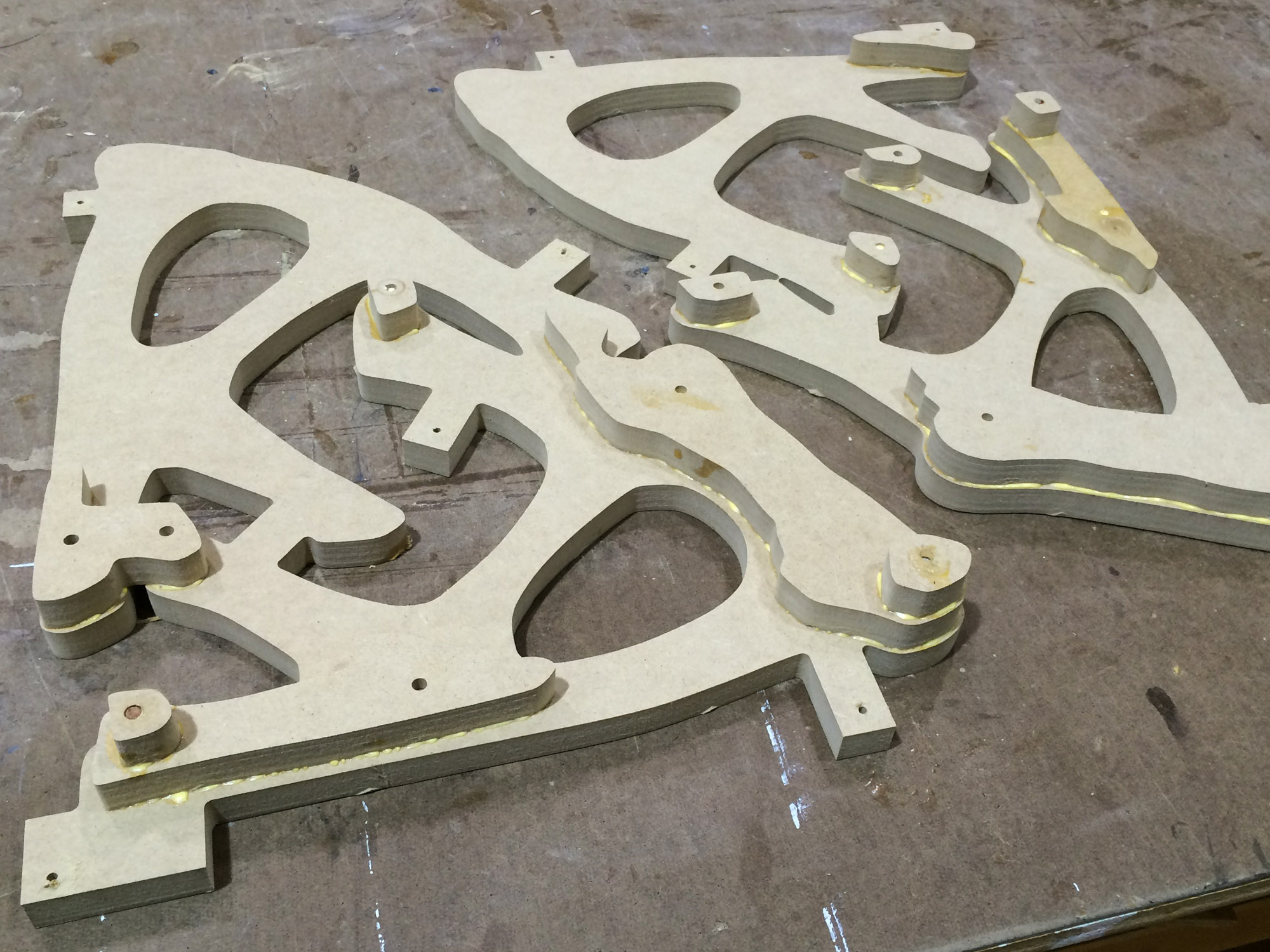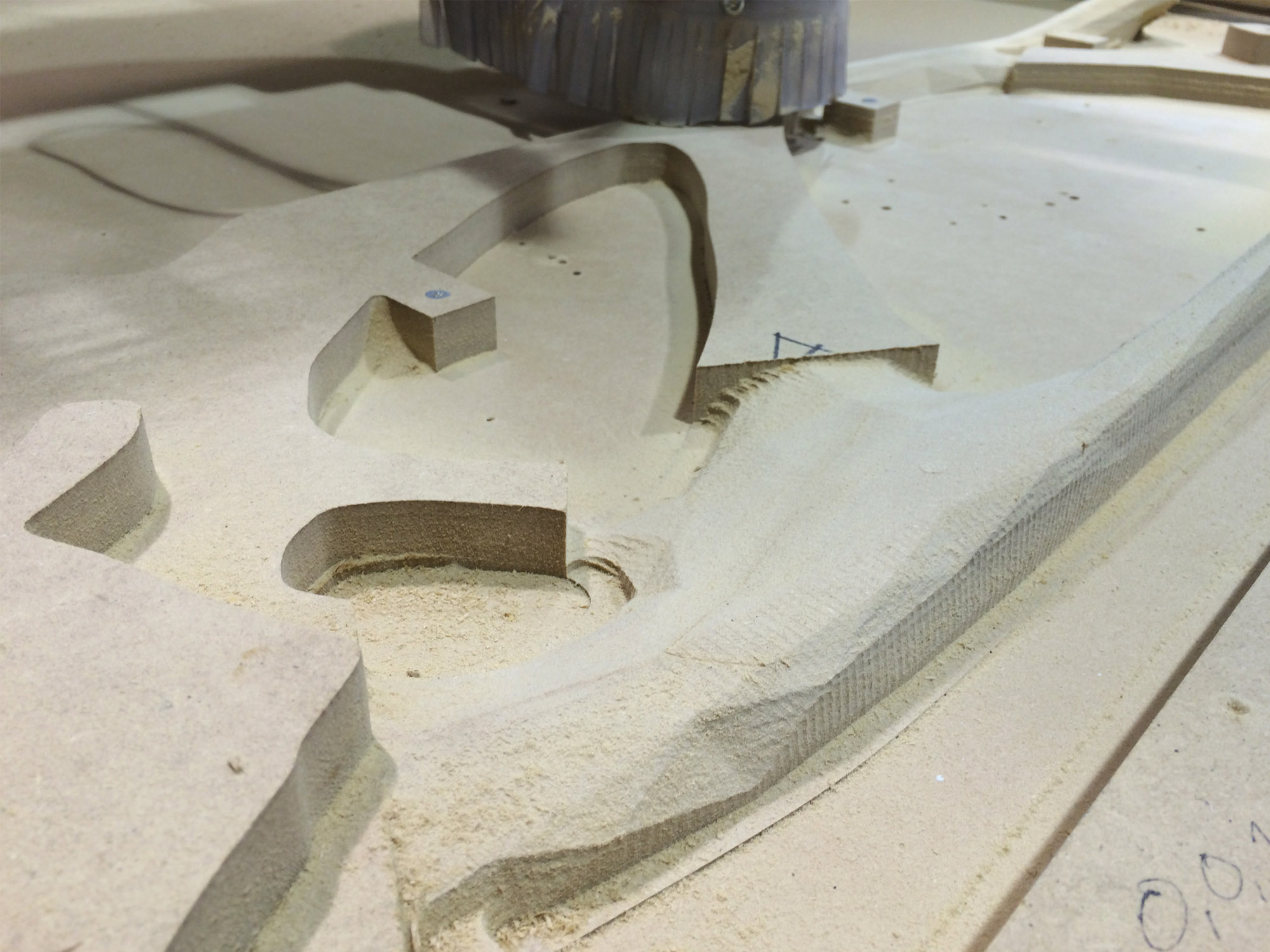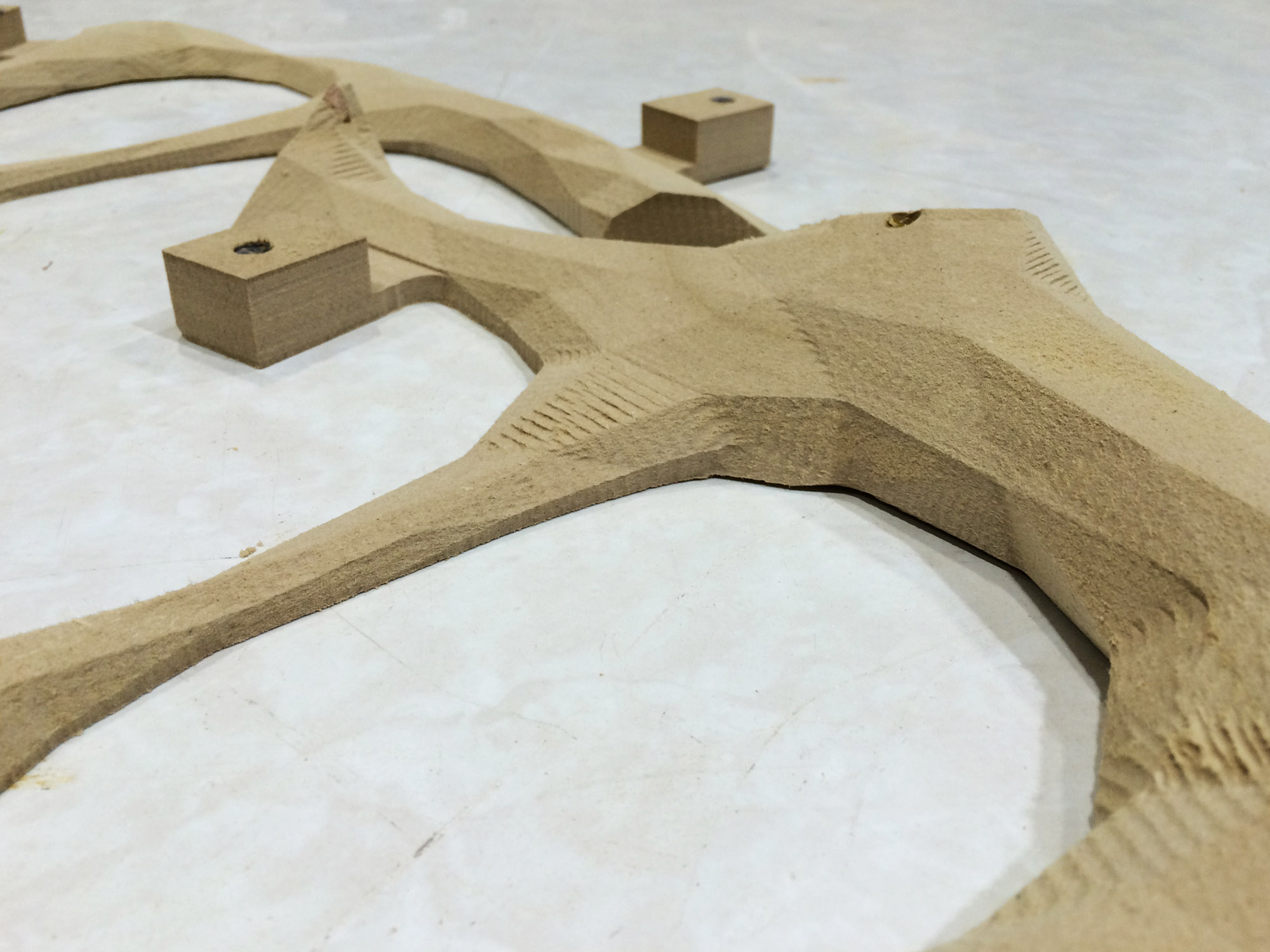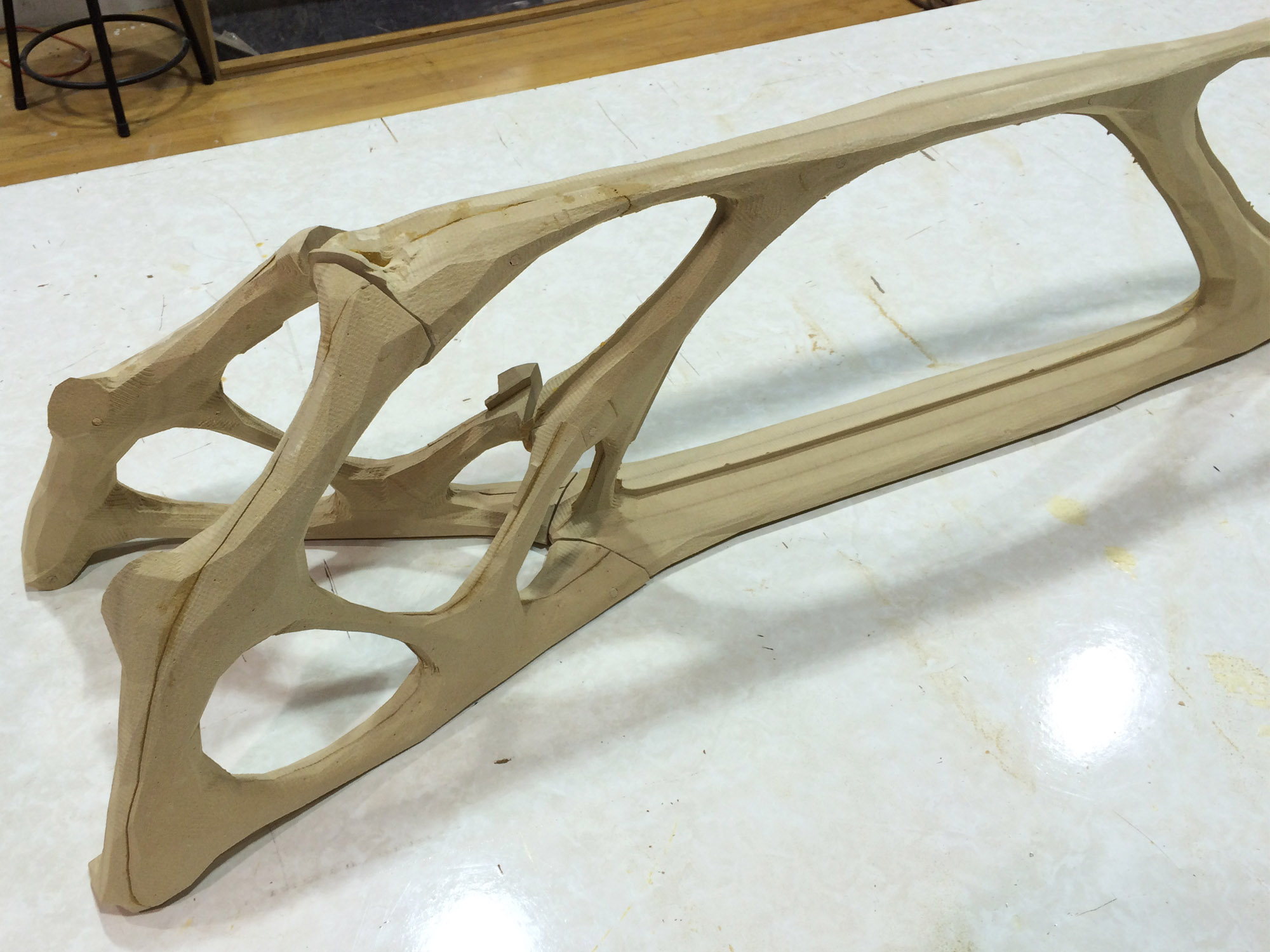topology optimization truss
Academic research
University of Oklahoma
Summer, 2015
MDF
TopOpt
Autodesk Inventor
solidThinking
BESO3d
Rhino3d
RhinoCAM
(Scroll down for image gallery)
Topology is a set of surface characteristics and relationships that remain intact, regardless of deformation. The combination of topology and geometry can be optimized for maximum structural efficiency through computational methods. These are based on the finite element method of analysis, incorporating an evolutionary solver to iteratively remove inefficient material.
Topology optimization software can arrive at solutions that were not possible by traditional methods. This software is common in product design disciplines which seek material reduction without loss of performance, but are uncommon within the field of architecture. This is partially due to the nature of architectural structures, which are complex, large in scale, require transmission of forces across joints, and often utilize composite materials such as reinforced concrete.
The perception of relinquishing design agency to the computer may be another factor in the slow adoption of this technology. It may be believed that an optimization routine will return a singular idealized solution that leaves no room for architectural expression. This project investigated the current techniques of topology optimization and the role that they may play within the creative design process. It questioned whether optimization could be a flexible tool that plays a partnership role during early generation of design concepts.
This project in these images focused on the reconfiguration of a truss. This is a non-rationalized outcome, which has not been translated into a realistic constructible entity. It was CNC milled of MDF to visualize the complexity of raw optimization solutions.
